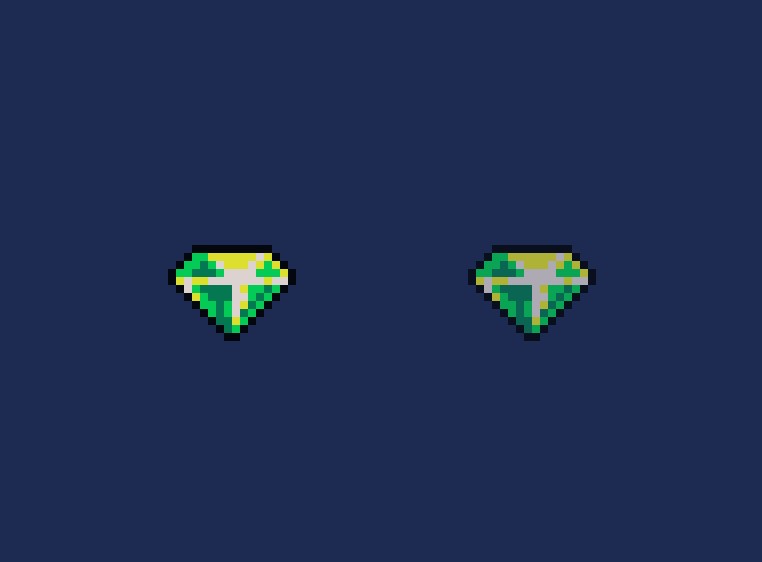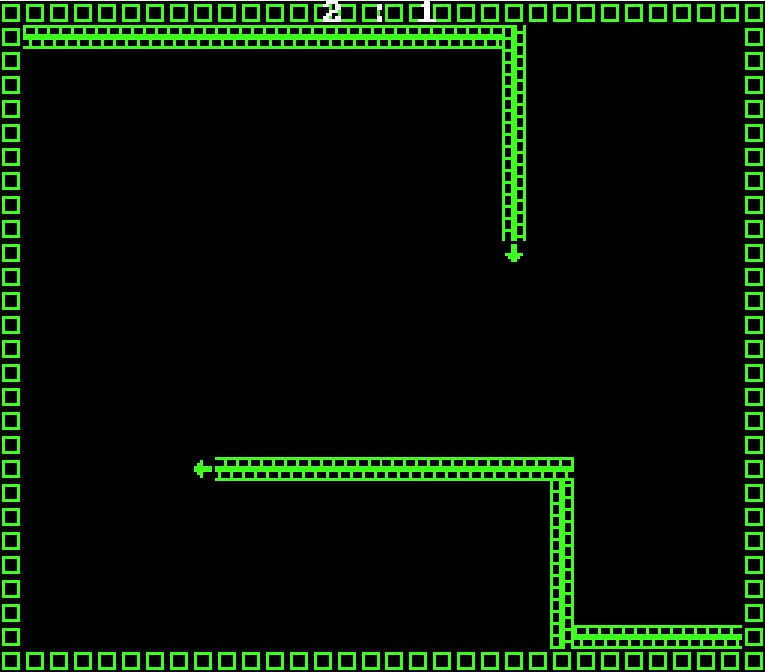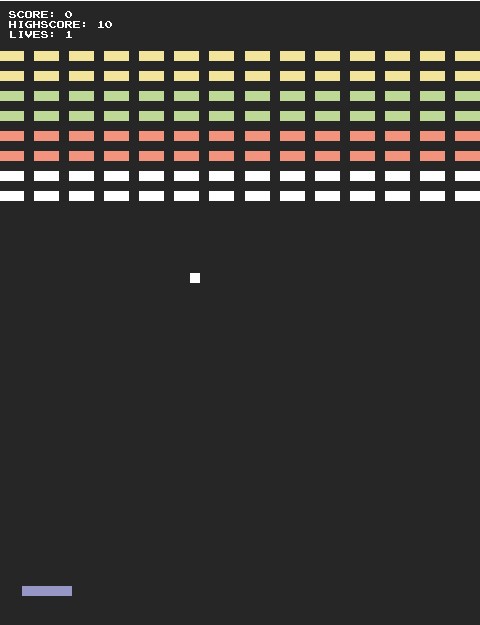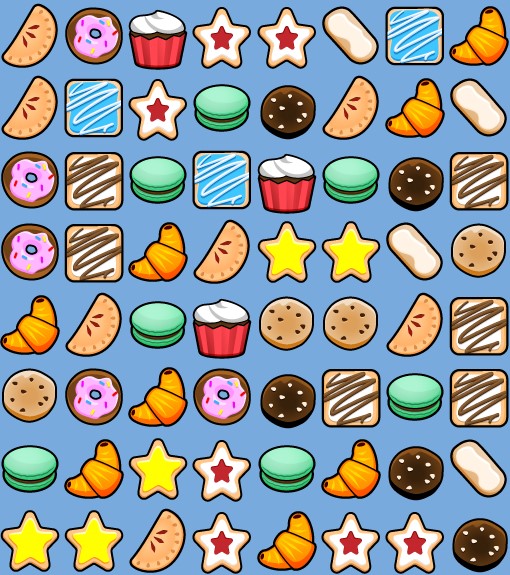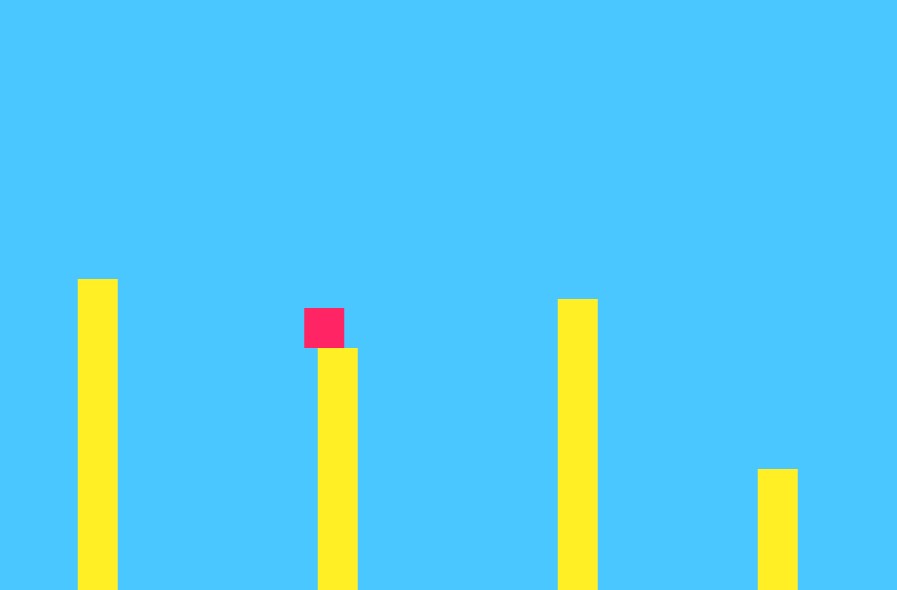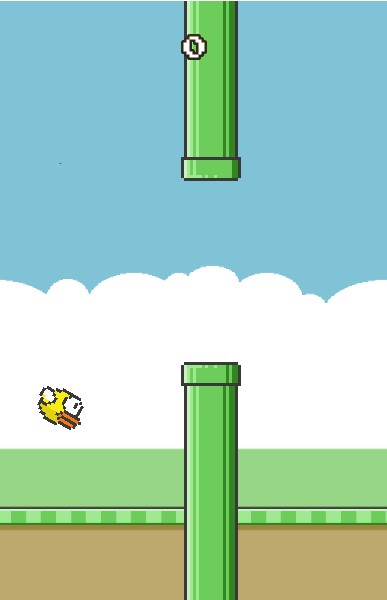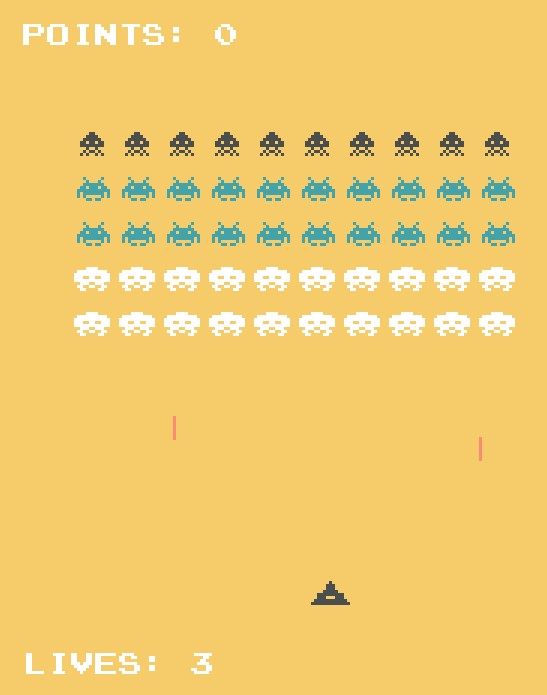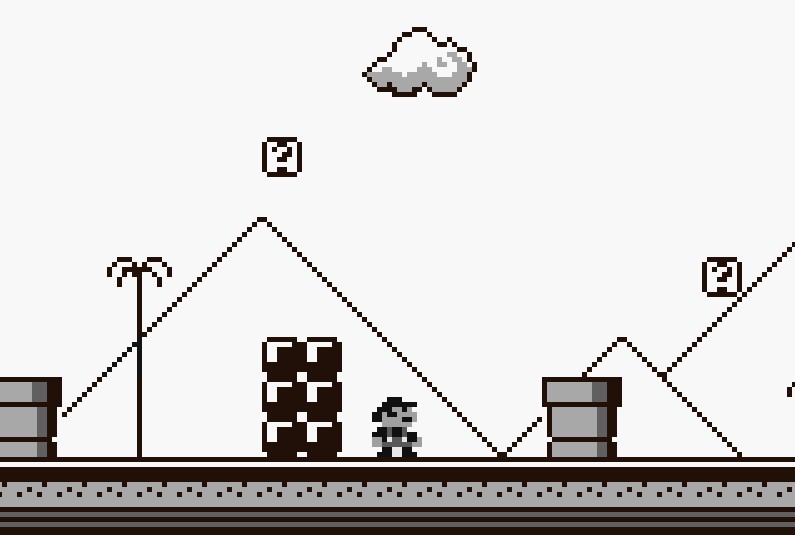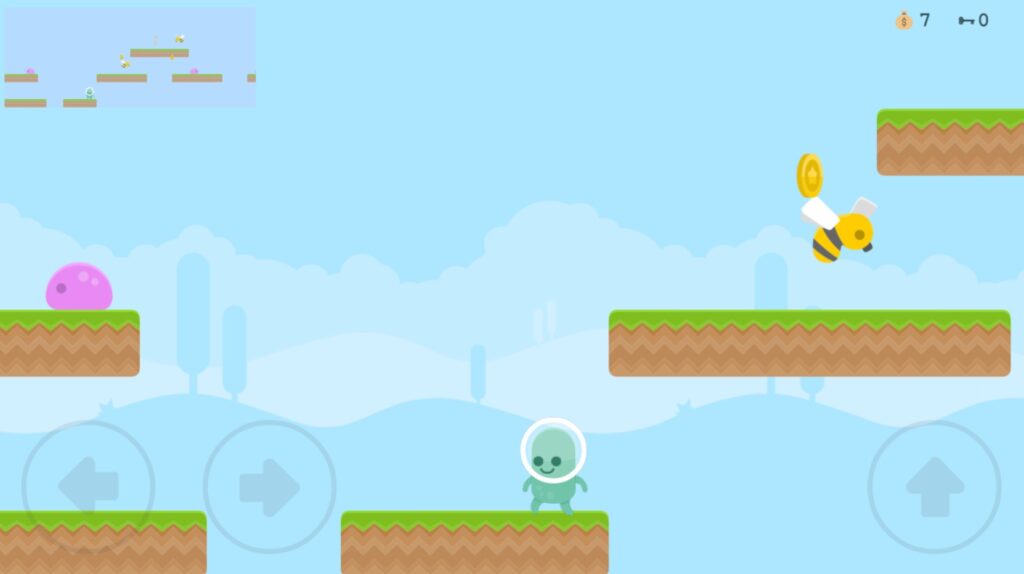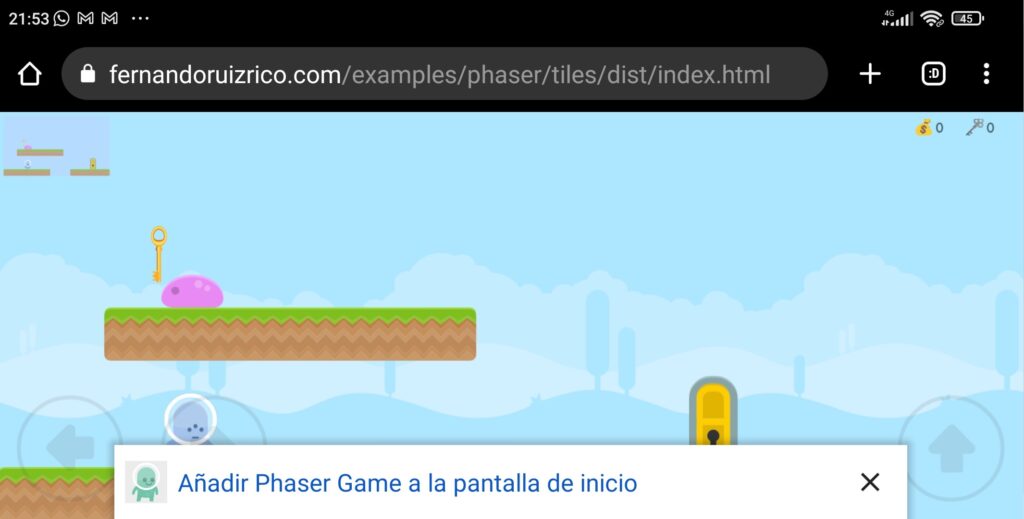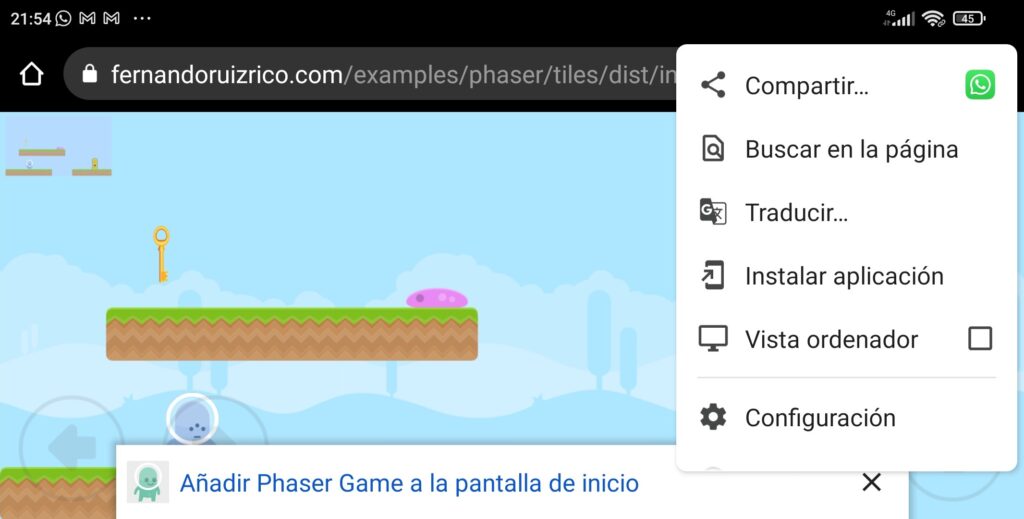Introduction
In this unit we will build a clone of Google Chrome “secret” Dino game (the original game can be revealed by entering “chrome://dino” in the address bar). We will use simple web technologies such as HTML, CSS, JavaScript and Phaser 3, so that any user can play on any device just using any browser (not only Chrome).
The result is a game which looks almost the same as the original one using less than 10% lines of code. As it can be seen from the Chromium source code, the original game is made of more than 4000 lines of code, whereas the one in this unit has been developed using around 300 lines of code. This means that Phaser could be a much better option than simple JavaScript when thinking about game development.
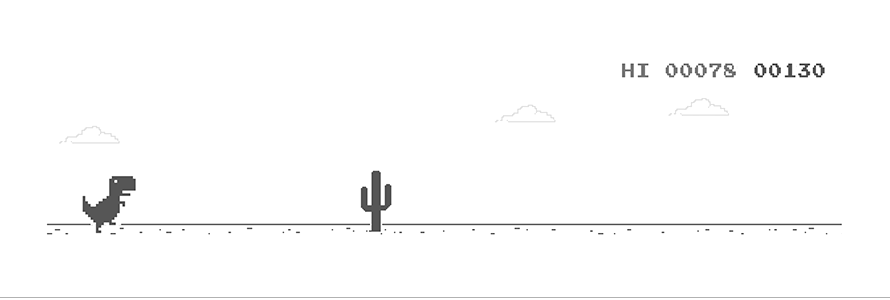
Some features
This version of the game clones almost every feature of the original one:
- The speed of the game is increased gradually.
- Both cactuses and birds will appear randomly to hurt you.
- Two scores are shown: current and highest.
- Each time the user reaches 100 points, the score blinks and a sound is played.
- It can be played on desktop computers using both the mouse and the keyboard:
- By clicking on the screen to jump or to restart the game.
- Using the up arrow key or the space bar to jump, the down arrow key to duck under the enemy, and the enter key to restart the game.
- It can be played on mobile devices by touching the screen, the same way as any single button game.
- The game is automatically adjusted to fit the screen size, even if it changes after the page is loaded (for example, in case the user rotates the device).
- Vibration is activated on mobile devices when the game over screen appears.
CSS code (styles.css)
We are going to insert some CSS code to remove any margin and padding, and also to remove the scrollbars, so that the whole window size is used when the game is started:
html, body {
margin: 0px;
padding: 0px;
overflow: hidden;
height: 100%;
}
HTML code (index.html)
We are going to use a single HTML file to link all the files in the project. This is going to be the “index.html” file:
<!DOCTYPE html> <html lang="en"> <head> <meta charset="utf-8"> <meta name="description" content="Dino game clone using Phaser"> <meta name="keywords" content="HTML, CSS, JavaScript, Phaser"> <meta name="author" content="Fernando Ruiz Rico"> <title>Dino Phaser</title> <link href="styles.css" rel="stylesheet"> </head> <body> <script src="https://cdn.jsdelivr.net/npm/[email protected]/dist/phaser.min.js"></script> <script src="preload.js"></script> <script src="create.js"></script> <script src="update.js"></script> <script src="config.js"></script> </body> </html>
Constants and Phaser configuration (config.js)
We are going to define some constants (i.e. screen width and height and text styles) so that we can use them inside every JavaScript file. We will also define a function to set the initial values of some variables before the game is started, together with the usual Phaser configuration, which must be performed as usual.
Moreover we are adding a piece of code to check whether the screen is being resized (i.e. when the device is rotated or the window size is adjusted) so that the whole game is reloaded to fit the new values of the screen width and height.
const WIDTH = window.innerWidth;
const HEIGHT = window.innerHeight;
const TEXT_STYLE = { fill: "#535353", font: '900 35px Courier', resolution: 10 };
function initVariables() {
this.isGameRunning = false;
this.gameSpeed = 10;
this.respawnTime = 0;
this.score = 0;
}
const config = {
type: Phaser.AUTO,
width: WIDTH,
height: HEIGHT,
pixelArt: true,
transparent: true,
physics: {
default: 'arcade',
arcade: {
debug: false
}
},
scene: { preload: preload, create: create, update: update }
};
let game = new Phaser.Game(config);
let resizing = false;
window.addEventListener('resize', () => {
if (resizing) clearTimeout(resizing);
resizing = setTimeout(() => window.location.reload(), 500);
});
The assets
We will need some images, sprites and sounds. You may use any assets you like, but we are providing the original ones so that you can easily develop the same game as the one available in Google Chrome. Some examples are shown below, and also a zip file containing all the assets can be downloaded here.
Images




Sprites



Sounds
Loading all the assets (preload.js)
So that we can use all those images, sprites and sounds, they have to be loaded previously. That is the purpose of the “preload()” function.
Inside the “initSounds()” and “createAnims()” we will set the volume of the sounds and the frames of the animations respectively.
function preload() {
this.load.audio('jump', 'assets/jump.m4a');
this.load.audio('hit', 'assets/hit.m4a');
this.load.audio('reach', 'assets/reach.m4a');
this.load.image('ground', 'assets/ground.png');
this.load.image('dino-idle', 'assets/dino-idle.png');
this.load.image('dino-hurt', 'assets/dino-hurt.png');
this.load.image('restart', 'assets/restart.png');
this.load.image('game-over', 'assets/game-over.png');
this.load.image('cloud', 'assets/cloud.png');
this.load.image('obsticle-1', 'assets/cactuses_small_1.png');
this.load.image('obsticle-2', 'assets/cactuses_small_2.png');
this.load.image('obsticle-3', 'assets/cactuses_small_3.png');
this.load.image('obsticle-4', 'assets/cactuses_big_1.png');
this.load.image('obsticle-5', 'assets/cactuses_big_2.png');
this.load.image('obsticle-6', 'assets/cactuses_big_3.png');
this.load.spritesheet('dino', 'assets/dino-run.png', { frameWidth: 88, frameHeight: 94 });
this.load.spritesheet('dino-down', 'assets/dino-down.png', { frameWidth: 118, frameHeight: 94 });
this.load.spritesheet('enemy-bird', 'assets/enemy-bird.png', { frameWidth: 92, frameHeight: 77 });
}
function initSounds() {
this.jumpSound = this.sound.add('jump', { volume: 0.75 });
this.hitSound = this.sound.add('hit', { volume: 0.75 });
this.reachSound = this.sound.add('reach', { volume: 0.75 });
}
function createAnims() {
this.anims.create({
key: 'dino-waiting',
frames: this.anims.generateFrameNumbers('dino', { start: 0, end: 1 }),
frameRate: 1,
repeat: -1
})
this.anims.create({
key: 'dino-run',
frames: this.anims.generateFrameNumbers('dino', { start: 2, end: 3 }),
frameRate: 10,
repeat: -1
})
this.anims.create({
key: 'dino-down-anim',
frames: this.anims.generateFrameNumbers('dino-down', { start: 0, end: 1 }),
frameRate: 10,
repeat: -1
})
this.anims.create({
key: 'enemy-bird-anim',
frames: this.anims.generateFrameNumbers('enemy-bird', { start: 0, end: 1 }),
frameRate: 6,
repeat: -1
})
}
Creating the scores, the clouds, the dino, and the game over message (create.js)
- Scores: Two boxes are used to print both the current and highest scores on the right hand side of the screen.
- Clouds: A loop will be used to create 3 clouds at once printing the same image on random positions.
- Dino: The dino will collide with the ground below, and it will jump using the keys defined here (in our case we will use both the up cursor key and the space bar). The mouse functionality is already available by default.
- Game over: A message will be shown when the user collides with either the birds or the cactuses. After the user clicks on it, this message will be hidden using the “setAlpha(0)” function call.
function initColliders() {
this.physics.add.collider(this.dino, this.obsticles, () => {
initVariables.call(this);
updateHighScore.call(this);
this.hitSound.play();
this.physics.pause();
this.anims.pauseAll();
this.dino.setTexture('dino-hurt');
this.gameOverScreen.setAlpha(1);
if (window.navigator.vibrate) window.navigator.vibrate(50);
}, null, this);
}
function createScore() {
this.scoreText = this.add.text(WIDTH - 25, HEIGHT / 3, "", TEXT_STYLE).setOrigin(1, 1);
this.highScoreText = this.add.text(0, HEIGHT / 3, "", TEXT_STYLE).setOrigin(1, 1).setAlpha(0.75);
}
function createClouds() {
this.clouds = this.add.group();
for (let i = 0; i < 3; i++) {
const x = Phaser.Math.Between(0, WIDTH);
const y = Phaser.Math.Between(HEIGHT / 3, HEIGHT / 2);
this.clouds.add(this.add.image(x, y, 'cloud'));
}
this.clouds.setAlpha(0);
}
function createDino() {
this.dino = this.physics.add.sprite(0, HEIGHT / 1.5, 'dino-idle').setSize(50).setGravityY(5000).setOrigin(0, 1);
this.dino.play('dino-waiting', true);
this.physics.add.collider(this.dino, this.belowGround);
this.cursors = this.input.keyboard.createCursorKeys();
this.spaceBar = this.input.keyboard.addKey(Phaser.Input.Keyboard.KeyCodes.SPACE);
this.startText = this.add.text(WIDTH - 15, HEIGHT / 1.5, "Press to play", TEXT_STYLE).setOrigin(1);
}
function createGameOverScreen() {
this.gameOverText = this.add.image(0, 0, 'game-over');
this.restart = this.add.image(0, 50, 'restart').setInteractive();
this.gameOverScreen = this.add.container(WIDTH / 2, HEIGHT / 2 - 50).setAlpha(0);
this.gameOverScreen.add([this.gameOverText, this.restart]);
this.enter = this.input.keyboard.addKey(Phaser.Input.Keyboard.KeyCodes.ENTER);
this.restart.on('pointerdown', () => restartGame.call(this));
}
function createWorld() {
this.ground = this.add.tileSprite(0, HEIGHT / 1.5, 88, 26, 'ground').setOrigin(0, 1);
this.belowGround = this.add.rectangle(0, HEIGHT / 1.5, WIDTH, HEIGHT / 3).setOrigin(0, 0);
this.physics.add.existing(this.belowGround);
this.belowGround.body.setImmovable();
this.obsticles = this.physics.add.group();
}
function create() {
initVariables.call(this);
initSounds.call(this);
createAnims.call(this);
createWorld.call(this);
createClouds.call(this);
createScore.call(this);
createDino.call(this);
initColliders.call(this);
createGameOverScreen.call(this);
setInterval(() => updateScore.call(this), 100);
}
Controlling the player and displaying the birds and the cactuses (update.js)
- Starting the game and building the ground: The “startGame()” method will build the ground progresively, just once, when the game is started the very first time.
- Restarting the game: After the game over message appears, the user may click on the screen to start a new game. This is done inside the “restartGame()” method, which hides the message using the “setAlpha(0)” method call, restarts the score and resumes all the physics.
- Updating the scores: The function “updateScore()” will not only update the current score, but it will also increment the game speed, and it will play a sound each time the user reaches 100 points, making the numbers blink at the same time. The “updateHighScore()” function will keep a record of the highest score each time a game is over.
- Placing and moving the birds and the cactuses: The “placeObsticle()” function will create either birds or cactuses randomly, and the “update()” function will move everything to the left except the dino, which will always remain in the same position.
function startGame() {
this.startText.destroy();
this.dino.setVelocityX(80);
this.dino.play('dino-run', 1);
function buildGround() {
this.ground.width += (WIDTH / 100);
if (this.ground.width > WIDTH) {
clearInterval(interval);
this.isGameRunning = true;
this.ground.width = WIDTH;
this.dino.setVelocityX(0);
this.scoreText.setAlpha(1);
this.clouds.setAlpha(1);
}
}
const interval = setInterval(() => buildGround.call(this), 15);
}
function restartGame() {
this.dino.setVelocityY(0);
this.dino.body.height = 92;
this.dino.body.offset.y = 0;
this.physics.resume();
this.anims.resumeAll();
this.obsticles.clear(true, true);
this.gameOverScreen.setAlpha(0);
this.isGameRunning = true;
}
function updateScore() {
if (!this.isGameRunning) return;
this.score++;
this.gameSpeed += 0.01;
if (this.score % 100 == 0) {
this.reachSound.play();
this.tweens.add({
targets: this.scoreText,
duration: 100,
repeat: 3,
alpha: 0,
yoyo: true
})
}
this.scoreText.setText(("0000" + this.score).slice(-5));
}
function updateHighScore() {
this.highScoreText.x = this.scoreText.x - this.scoreText.width - 30;
const highScore = this.highScoreText.text.substr(this.highScoreText.text.length - 5);
const newScore = Number(this.scoreText.text) > Number(highScore) ? this.scoreText.text : highScore;
this.highScoreText.setText(`HI ${newScore}`);
}
function placeObsticle() {
let obsticle;
const obsticleNum = Phaser.Math.Between(1, 7);
if (obsticleNum > 6) {
obsticle = this.obsticles.create(WIDTH, HEIGHT / 1.5 - Phaser.Math.Between(20, 50), 'enemy-bird');
obsticle.body.height /= 1.5
obsticle.play('enemy-bird-anim', 1);
} else {
obsticle = this.obsticles.create(WIDTH, HEIGHT / 1.5, `obsticle-${obsticleNum}`)
}
obsticle.setOrigin(0, 1).setImmovable();
}
function update(time, delta) {
if (this.isGameRunning) {
this.ground.tilePositionX += this.gameSpeed;
this.respawnTime += delta * this.gameSpeed * 0.08;
if (this.respawnTime >= 1500) {
placeObsticle.call(this);
this.respawnTime = 0;
}
this.obsticles.getChildren().forEach(obsticle => {
obsticle.x -= this.gameSpeed;
if (obsticle.getBounds().right < 0) {
this.obsticles.killAndHide(obsticle);
}
})
this.clouds.getChildren().forEach(cloud => {
cloud.x -= 0.5;
if (cloud.getBounds().right < 0) {
cloud.x = WIDTH;
}
})
}
else if (this.gameOverScreen.alpha && this.enter.isDown) {
restartGame.call(this);
}
if (this.dino.body.onFloor() && !this.dino.body.velocity.x && !this.gameOverScreen.alpha &&
(this.cursors.up.isDown || this.spaceBar.isDown || this.input.activePointer.isDown)) {
this.jumpSound.play();
this.dino.anims.stop();
this.dino.setVelocityY(-1600);
this.dino.setTexture('dino', 0);
if (!this.isGameRunning) startGame.call(this);
}
else if (this.isGameRunning) {
if (this.cursors.down.isDown) {
this.dino.play('dino-down-anim', true);
this.dino.body.height = 58;
this.dino.body.offset.y = 34;
}
else {
this.dino.play('dino-run', true);
this.dino.body.height = 92;
this.dino.body.offset.y = 0;
}
}
}
Proposed exercise: Using your own assets
Create a new version of the Dino game using your own assets (images, sprites and sounds). You can also change any other things you like.
Do not forget to create all the files required to run the code in this unit:
- styles.css
- index.html
- preload.js
- create.js
- update.js
- config.js
- assets folder
You may find many free assets in OpenGameArt, and some new versions of the Dino game in github:
Enjoy the game!
You can enjoy playing this wonderful game online here.
